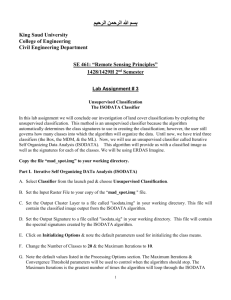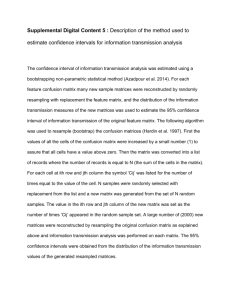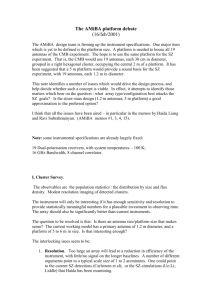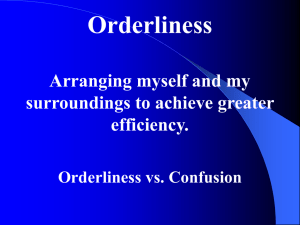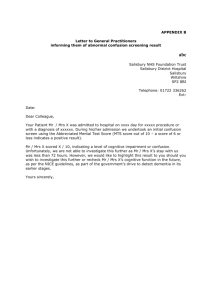LAB 9 / Problem 7: Supervised Classification
advertisement
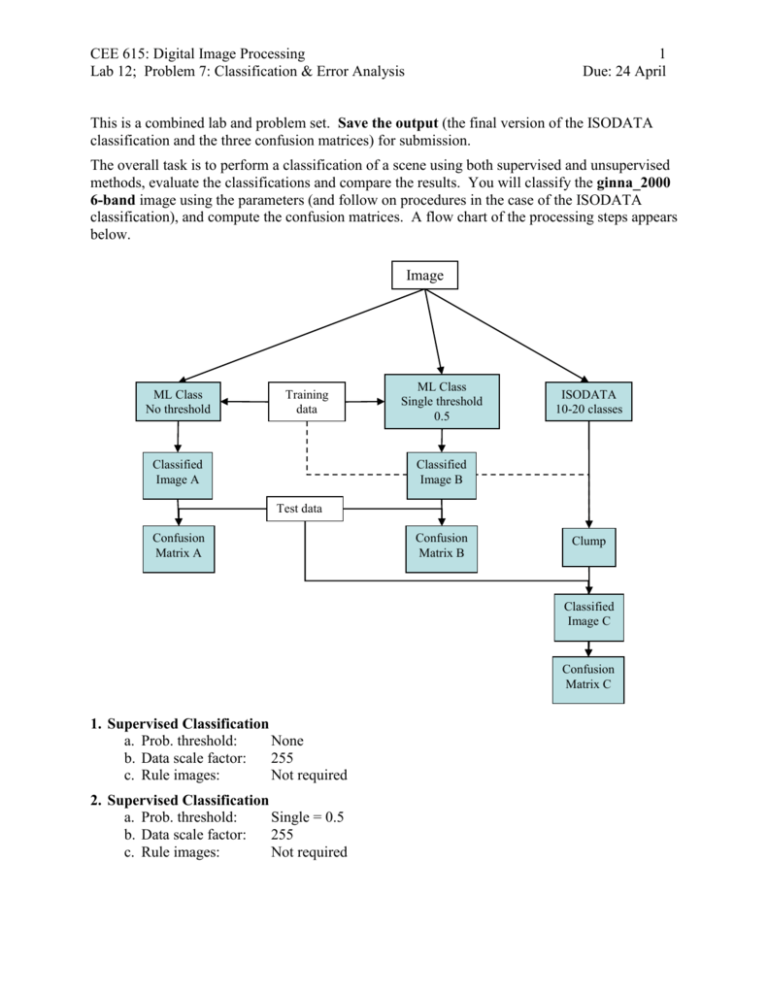
CEE 615: Digital Image Processing Lab 12; Problem 7: Classification & Error Analysis 1 Due: 24 April This is a combined lab and problem set. Save the output (the final version of the ISODATA classification and the three confusion matrices) for submission. The overall task is to perform a classification of a scene using both supervised and unsupervised methods, evaluate the classifications and compare the results. You will classify the ginna_2000 6-band image using the parameters (and follow on procedures in the case of the ISODATA classification), and compute the confusion matrices. A flow chart of the processing steps appears below. Image ML Class No threshold Training data Classified Image A ML Class Single threshold 0.5 ISODATA 10-20 classes Classified Image B Test data Confusion Matrix A Confusion Matrix B Clump Classified Image C Confusion Matrix C 1. Supervised Classification a. Prob. threshold: None b. Data scale factor: 255 c. Rule images: Not required 2. Supervised Classification a. Prob. threshold: Single = 0.5 b. Data scale factor: 255 c. Rule images: Not required CEE 615: Digital Image Processing Lab 12; Problem 7: Classification & Error Analysis 3. ISODATA Classification a. Perform the classification i. Number of Classes: ii. Maximum Iterations: iii. Change threshold: iv. Min. # pixels in Class: v. Max. class Stdev: vi. Min. Class distance: vii. Max # Merge Pairs: viii. Max. Stdev. 2 Due: 24 April 20-25 30 5 30 4 5 2 6 b. Reassign classes Using the training classes as a guide, use the Combine Classes function to group the ISODATA Classes to represent the 6 desired classes. i. Display the original image and overlay the training ROIs ii. Link the two images iii. Display the Cursor Location/Value utility iv. Examine each of the training ROIs and determine which ISODATA classes contribute to the classes of interest. Write these down. v. Eliminate duplicates. (No ISODATA class should be assigned to more than one training class.) vi. Select Classification > Post-classification > combine classes Combine Classes to selectively combine classes in classified images. Note 1: Combining classes or removing the unclassified class effectively deletes those individual classes. Note 2: It is best if the output class is one of the input classes, e.g., if classes 1, 2, 3 & 4 are all water classes, collapsing them into one class by reassigning classes 2, 3, & 4 to class one will avoid ambiguity. Save the combined class version classification image and save your notes about which classes were combined and which classes (e.g., water, bare soil, …) they are intended to represent. 4. Evaluate the classifications. a. Visual Analysis – Compare the three classified images visually. - Use the training and test ROIs to evaluate how well the classifications have performed. Were the pixels in the test areas classified correctly? Are there many unclassified pixels in these areas? - Examine areas that belong to classes not included in the classification, e.g., cars in the parking lots, buildings in the power plant complex, shoreline, roofs of houses (just below the parking lot toward the center of the image). - If there are misclassifications, are they reasonable, e.g., there are bare soil or grass patches in the orchards. This may be a correct classification in terms of the land cover, but it is an incorrect classification in terms of land use. CEE 615: Digital Image Processing Lab 12; Problem 7: Classification & Error Analysis 3 Due: 24 April - Are there any problems that could potentially be corrected by adjusting the classification procedure (ROI adjustment, increasing or decreasing the number of classes, changing classification parameters, …..) b. Confusion Matrix - Create the confusion matrices and compute the classification accuracy estimates using the test ROIs provided for each of the three classified images. Save the confusion matrix. Please format the matrix as a table. Problem Set 7 1. Submit i. the ISODATA classification ii. 3 confusion matrices, one for each classification 2. Make recommendations for improving the classification. Based on your visual analysis and a review of the confusion matrices, make a recommendation for improving the classification. That is, consider where there are problems with omission or commission and come up with a strategy for adjusting the training data or the classification parameters that would be likely to result in an improved classification. Alternatively, justify why the classification is not likely to improve with adjustments. 3. Develop your own accuracy estimate. Develop a simple accuracy estimate for the user who is interested only in the area (number of pixels) covered by each class, regardless of absolute accuracy. For this purpose errors of omission and commission are acceptable as long as they balance out for each class. Specify the value of your measure for a) "perfect" accuracy, b) omission > commission, and c) commission > omission. Also note whether the scale is linear or nonlinear and whether the more sensitive to an excess of one type of error or another.
